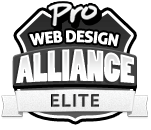Attracting clients is the life-blood of most businesses and how clients are attracted to businesses has changed drastically in the past decade. Do you remember when telemarketers would annoyingly call around dinner time? That happens less often now because trends have shifted to online methods of reaching people. Online social media site marketing methods like Facebook Business Pages have revolutionized marketing because audiences can be specifically targeted and engaged on a level that telemarketers could never reach — and fewer people have their dinners interrupted.
Gartner estimates that 15% of business clients can be lost if a business isn’t responsive to online reviews, comments, and potential clients. Given the significance of social media, your small business simply can’t afford not to have a Facebook Business Page. To easily build a Business Page on Facebook for your small business, you can follow the basic outline provided by Facebook , itself, but it’s important to add the right content once you have the basic skeleton set up.
The preliminary steps in setting up a Facebook Business Page
1. Choose a category and a page name for your business.
2. Upload an image to represent your business. Many people choose their business logo. This will serve as a profile picture on your Facebook Business Page.
3. Write a brief “About” statement describing what your business does.
The Effective “About” Section
Writing the “About” section can be difficult. Statistics can be boring and it’s difficult to write an engaging, captivating two-to-three-sentence blurb about your company. Consider using actionable verbs like “achieve” and “produce” and avoid boring verbs like “was” and “be.” Some people make the mistake of writing in a completely different style from how most people talk, including words like “myriad” and “plethora.” Unless your business has to do with editing or writing, you’re probably going to want to keep it more colloquial.
Try recording your voice (most Smartphones have an app that can record a few seconds of you talking into your phone) simply describing what your business does. Though writing can be a challenge, most people don’t have as much trouble talking. Try describing your business as you would to a colleague or professional acquaintance. Remember to include a link to your company website in the “About” section of your Facebook Business Page.
Creating Archive-Worthy Content
Aside from your profile photo and “About” statement, you’re going to want to have a storage of original posts, including customer comments and reviews, as well as a description of services and products your business may offer. These can all be sorted under the custom tabs section when editing the page.
Manage and Engage
Facebook offers a service similar to Google Analytics to assess which tactics work to engage your audience and which don’t. To view these results, click on the “view insights” link at the bottom of the Admin page.
Share the Load With your Staff
If you know how important it is to respond to visitors who might leave comments on your Facebook Business Page, you might feel obligated to a task that can end up taking a lot of time. Fortunately, Facebook has made it easy to delegate that task. You can add page administrators by clicking on “edit page,” then “admins,” and “add.”
Examples of Successful Engaging Facebook Pages
One of the most effective Facebook Business Pages is that of Bare Escentuals . This site allows customers to post to the page and essentially control how the site looks. Leaning on an already-established fan base, consumers feel like the company is responsive to them in a dynamic way, which fosters growth for the business and attracts new clients. Customers were so interactive with this particular page that it led to a redesign of the company’s packaging for easy access.
Burt’s Bees has established itself as a maker of natural beeswax-based cosmetics and skin products. The company uses their Facebook Business Page to introduce new products to their customer base in an interactive way, establishing the best possible product by listening to what their customers think of new releases. The company has doubled its fans since it transitioned to Facebook.
The take home message from both of these success stories is to create a page that gives dynamic feedback to customers. Even allowing clients and customers some control over how the site looks can foster interactivity. This type of feedback is necessary, not only online but also in product production. Listen to your clients for end-user feedback and they’ll appreciate what you have to offer even more.
For more help setting up a Facebook Business Page or other small business marketing tips, please feel free to contact us . That’s what we’re here for!





